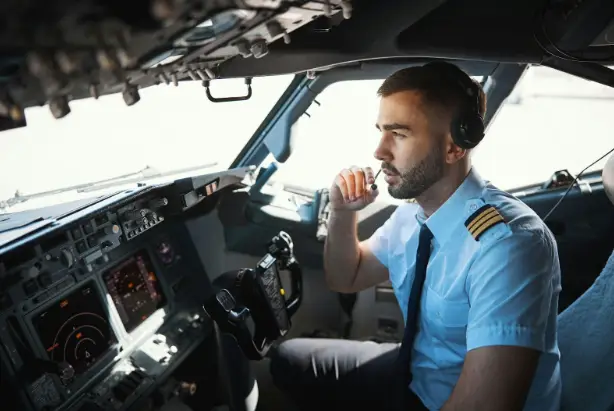Aviation offers a dynamic and rewarding career that requires dedication, rigorous training, and continuous learning. Aspiring pilots must navigate various stages, from choosing the right path to obtaining necessary certifications and gaining flight experience. Whether pursuing commercial aviation, corporate flying, or specialized roles, each step presents its own challenges and achievements. As Cody Fortier knows, those who commit to mastering the theoretical and practical aspects find themselves in a career that blends technical expertise with the thrill of exploration.
Choosing the Right Path in Aviation
Becoming a pilot starts with deciding which type of aviation career aligns with personal goals. Some pursue private flying for leisure, while others aim for commercial aviation, transporting passengers or cargo. Military aviation offers another route, combining rigorous training with service commitments. Each path requires dedication, but the rewards differ based on individual aspirations.
Qualifications vary depending on the chosen route. A private pilot typically needs fewer hours and certifications than a commercial airline captain. Military pilots undergo specialized training and often transition to civilian aviation later. Regardless of the path, strong problem-solving skills, quick decision-making, and adaptability are essential traits for success in the cockpit.
Many aspiring pilots start with discovery flights to experience firsthand what flying entails. This initial exposure helps determine whether aviation is the right fit before committing to formal training. Some find this moment exhilarating, while others realize the challenges ahead, making it a crucial step in the decision-making process.
Education and Flight Training
Selecting the right flight school is a crucial step in a pilot’s journey. Some choose independent flight schools, while others enroll in university aviation programs that offer structured coursework alongside flight training. The decision often depends on budget, career goals, and learning preferences. A well-rounded training program provides both theoretical knowledge and hands-on flying experience, ensuring students are fully prepared for real-world aviation challenges.
Ground school plays an influential role in a pilot’s education, covering essential topics like aerodynamics, weather patterns, and navigation. Mastering these subjects is just as important as time spent in the cockpit, as a strong theoretical foundation enhances safety and decision-making during flights. Flight simulators also help students refine their skills, allowing them to practice complex maneuvers in a controlled environment before operating an actual aircraft.
Many pilots recall their first solo flight as a defining moment in their training. The transition from flying with an instructor to taking off alone is both exhilarating and nerve-wracking. This milestone builds confidence and marks a significant step toward earning official certifications. The sense of accomplishment from successfully landing solo often reinforces an aspiring pilot’s commitment to the journey ahead.
Licensing and Certifications
Earning a pilot’s license involves multiple stages, each requiring dedication and practice. The Private Pilot License (PPL) is often the first milestone, granting individuals the ability to fly small aircraft independently. Those pursuing professional careers continue with a Commercial Pilot License (CPL), which demands additional flight hours, advanced maneuvers, and proficiency in handling real-world scenarios.
Beyond the basic licenses, pilots often obtain additional certifications to expand their qualifications. An instrument rating allows them to navigate through poor weather conditions using only cockpit instruments, while multi-engine training prepares them for flying larger, more complex aircraft. These specialized certifications enhance a pilot’s employability and open doors to higher-paying opportunities in the industry.
Medical fitness is another key requirement for pilots. The FAA mandates regular medical examinations to ensure pilots meet the health standards necessary for safe flying. Conditions like vision impairment, heart issues, or neurological disorders can impact certification, making it essential for aspiring aviators to maintain overall health throughout their careers. Routine exercise, proper nutrition, and regular health checkups help pilots stay in optimal condition for the demands of their profession.
Gaining Flight Experience and Career Readiness
Accumulating flight hours is a vital step in becoming a professional pilot. Many start by working as flight instructors, allowing them to sharpen their skills while helping others learn to fly. Others build experience through regional airlines or cargo operations, where they log valuable hours in a structured environment. These early career roles serve as stepping stones toward larger commercial airlines or corporate aviation.
Staying updated with aviation regulations and technological advancements is just as important as logging hours in the cockpit. Pilots must continuously refine their skills, adapting to new aircraft systems, safety protocols, and industry standards. Those who remain proactive in their learning are better positioned for long-term success in an evolving field. Networking with experienced pilots and engaging in industry workshops can also provide valuable insights that accelerate career growth.
Career Opportunities and Industry Growth
Aviation offers diverse career paths beyond commercial airline jobs. Some pilots choose corporate aviation, flying executives on private jets, while others explore charter services or aerial surveying. The demand for skilled pilots continues to grow as global air travel expands, creating opportunities in both passenger and cargo transport.
Salaries vary widely depending on experience, employer, and flight hours. Regional pilots typically start with modest earnings, but those who progress to major airlines or international carriers can expect substantial salary increases. Career advancement often depends on factors like seniority, additional certifications, and the ability to handle larger aircraft with greater responsibility. Pilots who seek leadership roles, such as becoming captains or training new aviators, often find additional career fulfillment and financial rewards.
The industry is also evolving with advancements in technology and sustainability efforts. Electric and hybrid aircraft, automation, and improved safety systems are shaping the future of aviation. Pilots who embrace these changes and adapt to new innovations will remain competitive in an increasingly modernized field.
Also Read: Pedro Vaz Paulo: Driving Business Growth and Innovation



